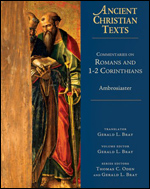Who has the Exousia (Authority) in 1 Cor 11:10? The Man or the Woman?

In 1 Cor 11:10 Paul says that “the woman ought to have a symbol of authority on her head”. The Greek word behind “authority” is “exousia” and it’s used 103 times in the New Testament. There are two differing views on how to understand “authority” in this passage. The traditional interpretation sees “authority” as belonging to the woman’s husband, which she submits to. The head covering then is a symbol of her place in creation as being subject to man. The modern interpretation sees “authority” as belonging to the woman. The head covering therefore is a symbol of her right to pray & prophesy in the assembly. It is the purpose of this article to help familiarize yourself with both positions, by giving a strong positive case for each view. We will then conclude by sharing which position we hold to. Read more
- Share
- Like
- Tweet
- Pin It
- Digg
- Delicious
- Tumblr
- VKontakte
- Flattr
- Buffer
- Love This
- Odnoklassniki
- Meneame
- Blogger
- Amazon
- Yahoo Mail
- Gmail
- AOL
- Newsvine
- HackerNews
- Evernote
- MySpace
- Mail.ru
- Viadeo
- Line
- Comments
- Yummly
- SMS
- Viber
- Telegram
- Subscribe
- Skype
- Facebook Messenger
- Kakao
- LiveJournal
- Yammer
- Edgar
- Fintel
- Mix
- Instapaper
- Copy Link







